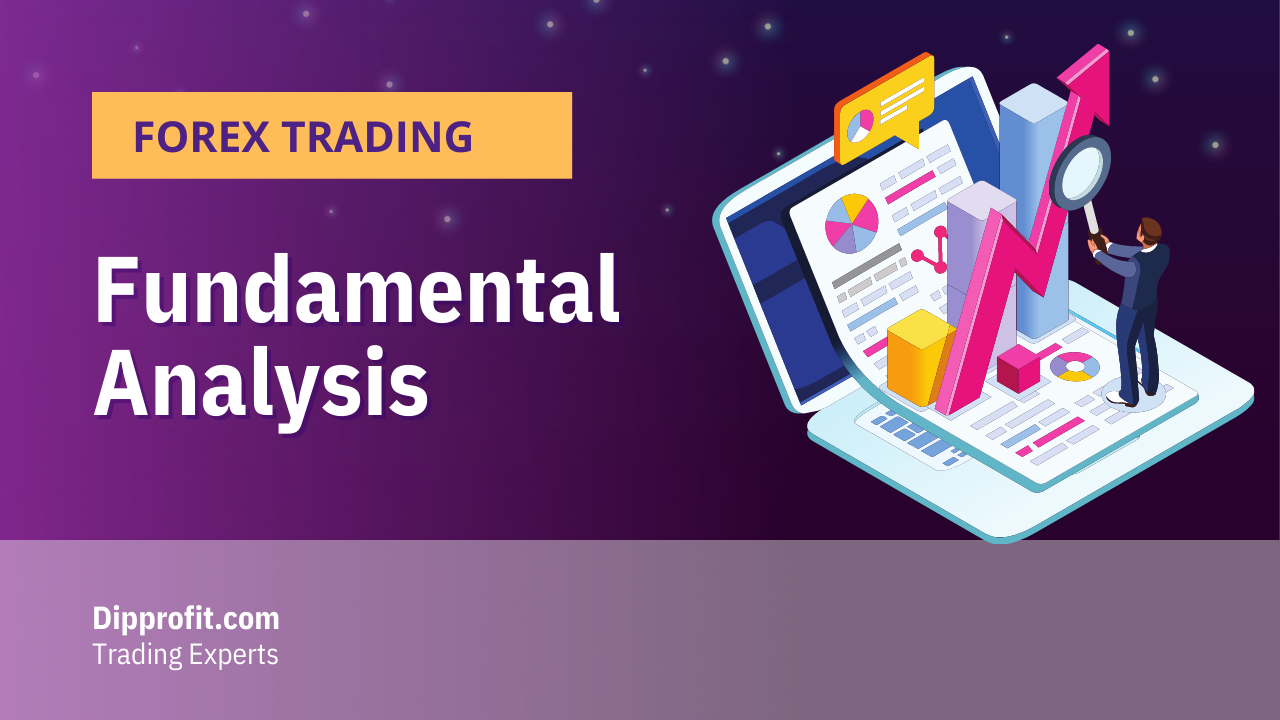There are several factors to consider during fundamental analysis and they affect the general market direction, paying attention to these factors would help improve profitable forex trading in a trader’s career. In this article, we would be listing those factors and shedding more light on some of them in this article.
Factors that Affect Fundamental Analysis
- NFP (Unemployment rate)
2. Political events
3. Interest Rates
4. Commodity Prices, stock prices (Inflation rate)
5. What do the big boys look at and what are they doing?
6. Credit Rating of the country (Mostly currency of developed countries)
7. Currency Regimes
8. Carry Trading, Capital & Investment flow. (Sentimental analysis)
9. Company M & A
10. Repatriation of profits
All these factors can be summarized into supply & demand
Firstly you should understand that big institutions look at economic indicators and use them in carrying out fundamental analysis, this is why we call them institutional traders. Examples of the big boys are:
- The government: The government deals with Employment data and inflationary data. Also note that some economic data can be manipulated, especially political ones.
- The Hedge funds
- Bank Traders (central banks)
NOTE: Don’t look at one data in isolation. What drives the economic market in a long term is a variety of factors and events.
In Fundamental analysis one of the most important factors to consider is the Percentage change in data. If the percentage change data is released and it’s positive but still less than traders’ expectations, the currency is still going to be bearish
Also, some events can happen outside these factors I have stated above that would have a direct impact on a country’s economy and they are called ADHOC EVENTS. ADHOC events are events that are not scheduled into the economic calendar of a country and come up impromptu. E.G, natural disasters, pandemic,
Another factor to take into consideration that influences fundamental analysis is the economic cycle of the market. As a professional trader, you need to know the answers to these questions. What market are we in? expansion or contraction? if we are in the late stage of market expansion, people would pay attention to inflation, because they would expect the government to raise interest rates.
When it’s a contraction, people won’t care about inflation, they would start to care about the unemployment rate.
How to Master Fundamental Analysis
- Have a long-term trading horizon (weeks, months).
- Use fundamental factors to generate ideas for trading and have an investor’s mindset.
- Understand factors that drive the financial markets in the long term.
Factors that Drive the Forex Markets
There are various fundamental factors that affect and influence the forex market, as mentioned at the beginning of this article, some of those factors include, the unemployment rates, Core Consumer Price Index, Core Production Price Index, Inflation rates, and interest rates.
Also, market sentiment (how traders feel) are they optimistic about the market or pessimistic? How they perceive economic data, political events, and central bank actions that really matter. Investors’ and traders’ perception of these events is also part of what affects the market movement (supply & demand).
Delta of fundamentals matters more than absolute numbers. Delta here means the change in fundamentals the change here means the percentage in the numbers, not the absolute numbers themselves.
This is because if you see a currency economic data with a poor value in the last month and it is released in a new month and the values are still poor but the percentage change between the last month’s value and the new month’s value is positive, the currency can still go up.
Market Expectation:
The most important of them all is the general market perception, how investors, economists, and traders perceive the market information or news to be that matters the most.
If the central bank, the Feds, or the government does something completely out of expectation then it’s going to cause a massive market move, but if the government raises interest rates and everybody expected it, it’s not going to move the market that much.
Forex Regimes
Another important forex fundamental indicator is the forex regimes. As a trader you need to know the exchange rates regime of a currency pair you are trading on, it can either be a fixed regime or a floating regime.
It is very important because it determines the opportunity. Whether it’s a fixed or floating regime would determine if the currency has enough volatility or not and volatility determines if there is an opportunity for us or not.
Fixed Exchange Rate Regimes:
This is fixed by the central banks and is extremely low in volatility, which means there offer less opportunity. These types of currencies are pegged to another currency or a basket of currencies.
Advantages:
It is very good for individuals into e-commerce that are into import and export, this is also because it gives Stability
Disadvantages:
Lacks autonomy, and volatility, and is expensive to maintain. Examples of currencies with fixed exchange rate regimes: are the Chinese Yuan, Hong Kong Dollar, and SGD (Singapore dollar). Trading these currency pairs, don’t expect a lot of profit.
Floating Exchange Rate Regimes
Currencies under this category are allowed to float freely according to the market drivers.
They can better be classified as managed floats due to the central bank’s interventions. Interventions are possible even under this regime.
It is better to trade currencies with floating regimes to give you room for more profit.
Some of the drivers of floating regimes are as follows:
Economics factors that drive currencies under floating regimes.
Purchasing Power Parity:
This theory states that the exchange rates should move in such a way that it cost the same to purchase the same goods and services in 2 different countries. This means in an ideal market or in an inflation market, two goods in different countries should cost the same. But this is not possible in the real world if not there would be no e-commerce. which gives rise to arbitrage.
Interest Rate Parity:
This is another theory that states that the interest rate in 2 countries will adjust to equilibrium levels, which is not also feasible in the real world, because it means there would no arbitrage opportunities this means if the interest rate in the U.S is slightly higher than the interest rate in Europe, the interest rate in Europe would need to adjust and get slightly higher to match the interest rate of the Europe U.S this is not realistic because countries with higher interest rates have their currencies appreciate more than countries with lower interest rates.
The theoretical economic rules are therefore different from the real-life event because, in theory, it states that a country with a higher interest rate would depreciate whereas in the real world currencies with higher interest rates are going to have their currency appreciate.
Impact of Interest Rates on the Economy
It’s a thing of note that interest rates are also tools for fundamental analysis and they are affected by the level of inflation in the country. The central bank, Feds, looks at the level of inflation or inflationary number before making their decisions on interest rates.
Interest rates affect consumers, business owners, and homeowners, this is because most homeowners in developed countries borrow money to buy their houses and then are charged interest on them when they are repaying the loan debt.
If the interest rates of the country are high, it means the homeowners would be paying a lot higher than when it’s lower. the same can be said for business owners as they also lend money from banks and the government to finance their business and a higher interest rate means paying a bigger amount of interest.
on the flip side, high-interest rates are also very good for investors, that’s people who buy government bonds, and certificates of deposits, the high-interest rates would also give you higher returns as Returns on Investment (ROI).
In summary, a higher interest rate would attract more capital injection into the country’s economy and discourage lots of borrowing by businesses, house owners, and individuals, which would in turn curb inflation level, while a lower interest rate would allow for lots of borrowing and debts, reduce capital injection by businesses and individual which would, in turn, increase inflation level. Applying this in the forex trading terms we would look at interest rate differential.
Interest Rate Differential:
This is the process of comparing the interest rates of one country with that of another to determine the trajectory of the market.
For example, in the GBP/USD pair if the GBP interest rates are going up or have been increased by the government it would attract more capital which would make the currency appreciate and if the USD interest rates have dropped in relation to that of the GBP rates thereby also reducing the amount of capital injected into the countries economy and increasing the capital/funds leaving its reserves, the USD currency would depreciate.
In conclusion, it should be stated that fundamental analysis has its effect on the general forex market at all times but can be overlooked by intraday traders or scalpers, for professional swing/long-term traders, fundamental analysis is the backbone of your trading success.
So it is important to understand the dynamics of the market inside out before you decide on your journey as a swing trader. we hope you find this informative and very useful.
To stay informed each time we post new articles kindly click the subscription bell icon, and you would be notified each time a new post is made. You can also drop your comments in the comment box below if there are any topics you would like us to kindly treat.





Comments 6